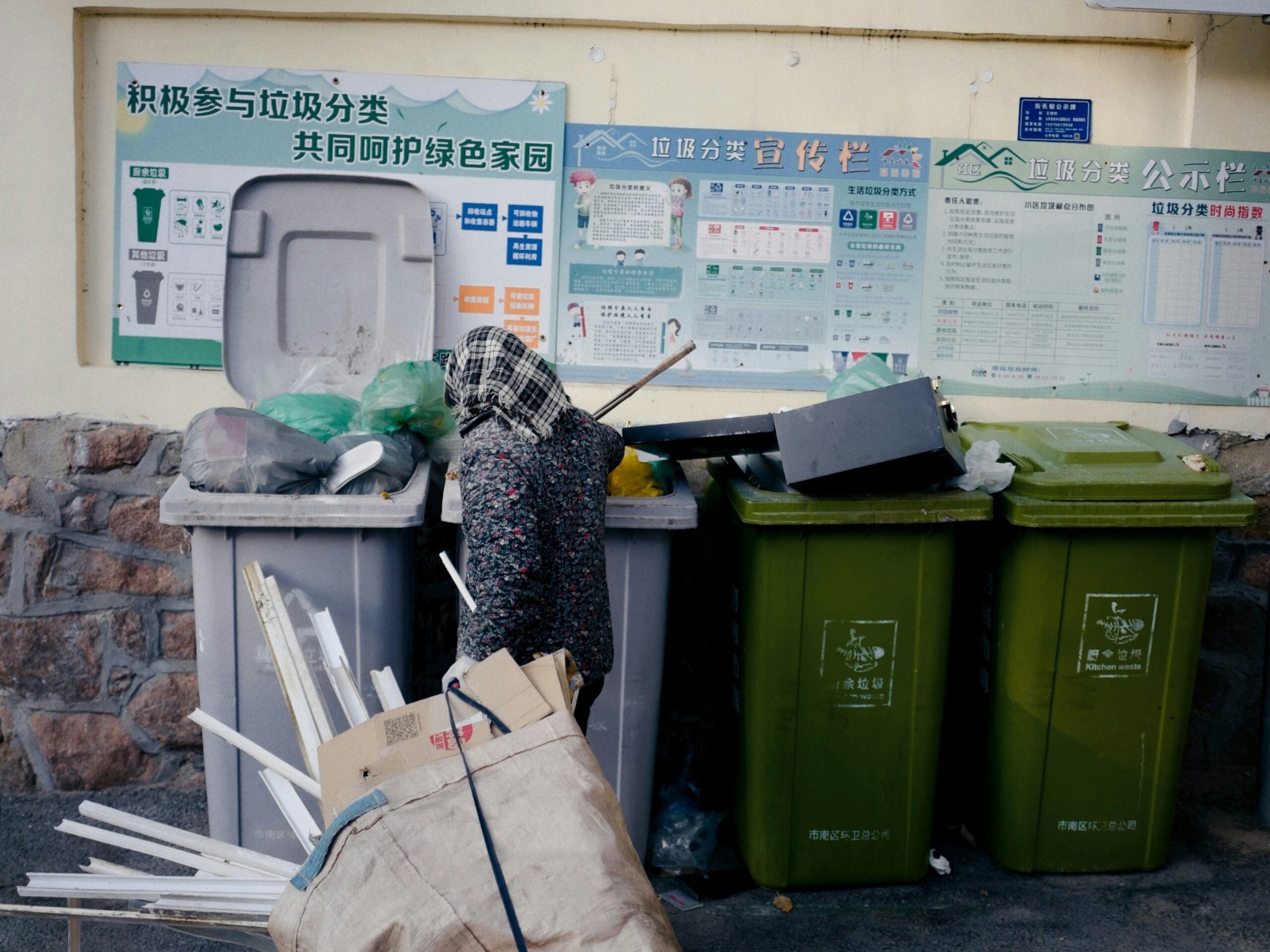Hong Kong’s long-awaited waste charging scheme was shelved last year after almost two decades of planning, testing, and consulting. The scheme, which would have required residents to purchase and use designated garbage bags, was a central part of the Government’s 2021 ‘Zero Landfill’ vision with the intention of reducing municipal solid waste (MSW) directly at source. However, after a poorly received pilot programme and two high-profile delays, the scheme was suspended indefinitely, leaving citizens, environmentalists, and industry workers confused and disappointed.
Like many other cities which experienced rapid development and consumption, Hong Kong’s waste issue surged over the past decades. In 2022, the total amount of MSW translated to 1.51kg/person/day on average, the majority of which ended up in landfills. Since incinerators and landfills would only superficially alleviate a magnifying problem, waste charging thus held much potential for the city. The revenue generated could contribute towards recycling initiatives and community engagement, and a wider waste management strategy could have revived a stagnant recycling industry whilst encouraging the development of new technology and job opportunities. Nevertheless, the repeated delays received backlash from local environmental groups, and increasingly souring public sentiment led government figures to criticise and call for its suspension.
MSW charging, or pay-as-you-throw (PAYT) schemes, have been implemented in many other places such as Taipei, Seoul, and Japan with great success. Hong Kong should be no different, especially in relation to Taipei, a city that shares many economic, social, and cultural similarities. Taipei even began with similar rates of MSW, and they currently charge the same price per litre of waste that the now-shelved charging scheme proposed. Taipei is an instructive and enlightening case study showcasing how a successful transformation is possible.
Taiwan’s industry now has more than 1,600 recycling companies, which operated with a total earning of USD $2 billion in 2015.
“
Taiwan: A successful waste charging story
In early 1970s Taiwan, there was a complete absence of public awareness about responsible waste disposal, and waste was dumped so openly that it earned the name ‘Garbage Island’. However, when the government eventually attempted to mitigate this, Taipei’s PAYT scheme was unveiled in carefully planned stages.
In 1988, they first established an extended producer responsibility (EPR) scheme with manufacturers, retailers, and importers, who were required to set up organisations which specialised in waste recycling and classification. In parallel, they pushed out public education initiatives, set up recycling sites, and arranged for garbage collection at designated spots with specialised personnel who provided guidance. These measures reduced MSW before any price mechanisms were introduced.
In 2000, when the formal PAYT scheme was established, existing infrastructure enabled residents to reduce and sort their waste effectively, whilst the EPR scheme collected fees from the manufacturers and retailers to create a recycling fund, which in turn subsidised the disposal system and the cost of collection and recycling. This feedback cycle created value and enterprise opportunities while encouraging further recycling habits. The industry now has more than 1,600 recycling companies, which operated with a total earning of USD $2 billion in 2015.
City-wide PAYT schemes are a sprawling and complex project, but Taipei’s system works because it was built on a partnership that anticipated this logistical complexity; the interdependence of key actors created an integrated system that was self-perpetuating, efficient, and sustainable.
So, what happened in Hong Kong?
First, Hong Kong’s waste charging scheme did not sufficiently engage with its stakeholders. A 2015 Legco framework proposal already outlined that property management companies (PMCs) would be the ones to facilitate the transition to the charging scheme while the Environmental Protection Department (EPD) would “closely and comprehensively engage”. Later in 2023, they confirmed that the broad guidelines were for stakeholders to adjust arrangements based on the conditions of their own premises or industry – essentially leaving the specifics of enforcement, implementation, and monitoring of a city-wide waste disposal scheme up to these individual PMCs.
This lack of structure and plan had a big impact on workers. During the pilot programme, frontline workers reported having doubled workloads and longer work hours due to the added responsibility of sorting both regular and designated bags. Public officials argued that the lack of guidelines would also force cleaners into opposition with residents regarding improperly packed trash, as they were suddenly responsible for ensuring compliance, and seminars held by officials for the catering and hotels sector apparently focused more on legal obligations than practical guidance.
Proposals of this scheme was initially positively received. In a 2012 consultation document, 63% of opinions expressed support for a MSW charging scheme. The scheme’s roll-out, however, simply did not address public concerns. Public polls showed that low-income households were extremely worried about the added financial burden, and a 2022 paper recommended that the government could make the bags free or heavily discounted. Instead, welfare authorities increased social security and old age assistance by HKD$10, but the subsidy was deemed inefficient for care home operators and patient campaign groups, who were expected to carry significantly increased costs because of the waste produced by their services, such as medical disposables or diapers.
Others reported that the scheme was not well publicised or promoted; they had to scan government websites and even then, they did not find clarity. The pilot programme itself only involved 0.003% of buildings in the city – or just 14 premises – and excluded many building types such as schools, hospitals, and recreational facilities which have unique disposal practices and needs. Officials cast doubt on the usefulness of such a small sample size.
Lastly, there lacked an overarching system in place; if people don’t know how to comply, they simply won’t. Right up until its suspension, the overwhelming majority of polled residents supported the delay of the scheme, and slightly over half responded that they still did not understand how the system would work. Thus, the compliance rate of households in the pilot programme went as low as 20%, and reported no material changes in waste generated during the trial. Without baseline organisation and infrastructure, the compliance cost for the public will be too great, and adoption will be low.
If Hong Kong can harness the private sector to drive transition and utilise complementary policies, this would greatly reduce the burden on the government whilst uniting private and public players under a common goal of waste reduction.
“
Recalling the foremost role of the state
The saga of Hong Kong’s waste charging scheme is a case for remembering the state’s role in achieving such laudable goals as waste reduction. In the same year as the scheme’s suspension, Hong Kong had recorded successes such as a twelvefold increase in domestic food waste collection, and environment chief Tse Chin-wan even announced that Hong Kong’s waste generation had peaked. However, this does not negate the fact that governments need to take a proactive role in shaping direction and actively create the conditions that would make such schemes viable.
Recycling must play an integral role in any waste charging plan, hence the scheme was shelved partly due to the lack of sufficient recycling infrastructure. However, in just recent years, Hong Kong’s first and only recycling plant with the technology to process PET bottles into food grade plastic flakes closed down after only 16 months from running under-capacity. There is no shortage of plastic bottles in the city, with an estimated 127 tonnes of PET bottles discarded per day in 2021; the question thus becomes whether the government will take the initiative in providing institutional support and opening up routes to direct waste to businesses like this.
More crucially, the government, as the overseer, needs to involve the whole production chain in order to make real changes to the status quo; from importers to manufacturers and suppliers, agreements should be made to reduce single use plastics or reclaim broken or discarded products such as lights and electronics. If funding is needed, why not impose an environmental tax on plastic products to fund recycling infrastructure and efficient waste processing? Why not switch to a plastics deposit fee of HKD $1 to increase bottle recycling, rather than the current HKD $0.10 refund? Citizens have expressed concerns about inconvenience from the start, so why not create reward systems that incentivise compliance?
The government is not alone in this massive undertaking. Taiwan’s industrial-level circular economy was not achieved via the efforts of any single institution or policy, but through ongoing and long-term adaptive governance which facilitated technological and social capabilities. If Hong Kong can harness the private sector to drive transition and utilise complementary policies, this would greatly reduce the burden on the government whilst uniting private and public players under a common goal of waste reduction. For instance, Hong Kong has begun to take steps towards this in the form of the Green Tech Fund, which provides government R&D funding for approved projects.
Nonetheless, there is no replacement for the initial-stage heavy lifting. Hong Kong’s waste collection system is already extremely efficient – so much so that it quietly operates in the background like a well-oiled machine. This means that one cannot rely on existing free market forces to push forth a transformation; the invisible hand will not value recyclables nor incentivise waste reduction unless the government champions this. Since the charging scheme’s failure, the government had expressed hesitation towards implementing ‘hard’ deadlines for other schemes such as the second phase of the city’s disposable plastic ban.
Perhaps what is needed is an entrepreneurial state that prioritises the bigger picture and has the temerity and agency to implement an environment where policies are enforced and stringent demands are met. The state can assume the role of a strategic mastermind, by laying innovation-enabling infrastructure, identifying the opportunities for growth, and actively creating new markets to fulfil objectives, from decarbonisation to waste reduction.
The state must act as the engine behind the city’s waste and recycling ecosystem to drive truly sustained behavioural changes. They must do the heavy lifting before asking for adoption on such a scale and align their actions with public concerns and policy goals. Until then, the waste charging scheme will remain a pipedream in Hong Kong’s future.
Renée Chu is the Head of Programmes and Content at GIFT HK, where she oversees the Programme Management team and content creation. Her interests include business management, organisational culture, and female advocacy.
Nicole Tan was a former intern at GIFT Hong Kong





